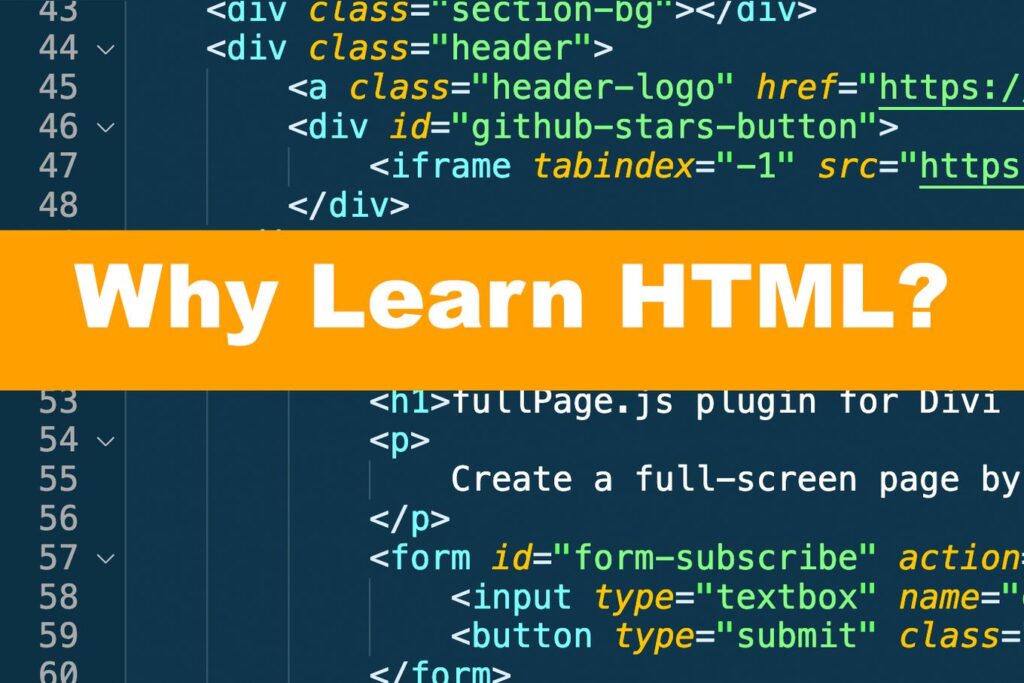Learning HTML and CSS in just one month is an achievable goal with the right approach and dedication. These fundamental languages are essential for building websites and understanding the basics of web development. To get started, begin by familiarizing yourself with the syntax and structure of HTML, which is used for creating the content and structure of web pages.
Once you have a solid grasp of HTML, move on to learning CSS, which is crucial for styling and designing websites. Dive into understanding CSS properties, selectors, and styling techniques to enhance the visual appeal of your web pages. Practice regularly, work on projects, and seek out online resources and tutorials to reinforce your learning. With consistent effort and commitment, mastering HTML and CSS in one month is definitely within reach.
HTML (Hypertext Markup Language) and CSS (Cascading Style Sheets) are two fundamental building blocks of web development. Learning these languages is essential for anyone interested in creating websites. Many aspiring web developers wonder how they can learn HTML and CSS effectively within a short period of time. In this guide, we will provide you with practical steps and resources to help you master HTML and CSS within one month.
Month-Long Learning Plan
Week 1: Understanding the Basics
Start your learning journey by familiarizing yourself with the basics of HTML and CSS. Spend the first few days learning the syntax and structure of HTML. Begin with simple tags, such as <p>, <h1>, and <a>.
Afterward, move on to CSS. Understand how CSS controls the appearance of HTML elements. Learn about selectors, properties, and values.
Throughout the week, alternate between theory and practical exercises. Follow tutorials, work on mini-projects, and review your code to reinforce your understanding.
Week 2: Building Layouts
During the second week, focus on creating layouts using HTML and CSS. Study how to structure web pages using semantic HTML tags, such as <header>, <nav>, and <footer>. Combine them with CSS properties like margin and padding to achieve desired designs.
Experiment with CSS frameworks like Bootstrap and Foundation to expedite the layout creation process. These frameworks provide pre-designed components and responsive features, making it easier to build professional-looking websites.
Week 3: Enhancing User Experience
In the third week, dive deeper into the world of web development by exploring advanced concepts and techniques. Learn about responsive design, media queries, and flexbox. These skills will enable you to create websites that adapt seamlessly to different screen sizes.
Additionally, study CSS animations and transitions to add interactivity and engaging effects to your web pages. Delve into JavaScript basics to further enhance user experiences with dynamic content and interactivity.
Week 4: Practicing and Expanding Knowledge
During the final week, allocate time to practice what you have learned and explore additional resources. Continue building projects to reinforce your understanding and improve your skills. Experiment with different layouts, styles, and interactive features.
Join coding communities and attend meetups or web development events to interact with other learners and professionals. Engage in discussions, seek feedback, and learn from experienced developers. Following relevant blogs and online publications is also a great way to stay updated with the latest trends and best practices.
Tips for Effective Learning
Learning HTML and CSS within a month requires dedication and discipline. Here are some tips to help you make the most of your learning experience:
Set a Realistic Schedule
Divide your study time into manageable chunks throughout the day and week. Consistency is key, so establish a routine that suits your schedule and stick to it.
Practice Regularly
Apply what you learn through practical exercises and projects. The more hands-on experience you gain, the better your understanding of HTML and CSS will become.
Seek Feedback and Collaborate
Engage with others in the coding community, join forums, and seek feedback on your work. Collaborating with peers will expose you to different perspectives and potentially provide valuable insights.
Stay Updated
Web development is a dynamic field, so it’s important to stay up to date with new trends, techniques, and best practices. Follow industry blogs and websites to keep learning and evolving your skills.
Never Stop Learning
Remember that HTML and CSS are just the beginning of your web development journey. Continuously expand your knowledge by learning new languages and frameworks to become a well-rounded developer.
Learning HTML and CSS in one month is an achievable goal if you follow a well-structured plan and dedicate yourself to practice. Remember to set realistic expectations and focus on understanding the core concepts. With determination and consistency, you’ll be well on your way to becoming a proficient web developer.
Learning HTML and CSS in one month is definitely achievable with dedication and the right resources. By setting specific goals, practicing regularly, and seeking help when needed, beginners can develop a solid foundation in web development within a relatively short period of time. Remember that learning is a continuous process, so continue to explore and build upon your skills even after the initial month is over. With perseverance and persistence, mastering HTML and CSS is well within reach.
